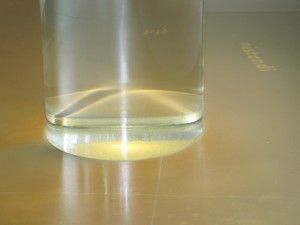out to dry
As it turns, US hair dryers do not fair well here in Iceland (even with transformers).
Cuts Make You
I have returned yet my thoughts are still traveling as if I was there. They are blowing around in a way that Icelanders might refer to as blasdur. Blowing and windy. Nothing like a deadline to determine a tack for a way through my mind.
RiskPress Gallery:
Cuttings October 4th - 27th
- Winds are here! And more to come.
During the duration of the exhibit, we (I and those who come to view the exhibit) will make a book. I am currently working on its design and matrix using letterpress at Iota and digital in my studio. I enjoy this back and forth way of working which seem to be feeding on each other.
Letterpress (at Iota Press):
Digital (at Holve studio):
"Weather Reports You"
Roni Horn's ongoing project: a collection of stories about the weather in Iceland from Icelandic people. I am interested in how other artists think about weather in their work. Since my travels to New Zealand in '06 and '07, one of their coldest and windiest springs and summers in 60 years, I began to reflect on wind as a metaphor for conditions of change and also started to collect their weather maps. Since then I have continued to collect maps from places I visited (Iceland examples below). And last year I also started a list of Icelandic words that qualify the differing conditions of wind. This year I added a few to the list.
vindur- wind
stormur - heavy wind
rok - hard wind
moldrok - strong wind with earth
sandrok - strong wind with sand
fárviðri - crazy wind, tempest, typhoon
gola - breeze
gjóla - medium breeze
hvassviðri - strong breeze
logn - no wind
andvari - breath
kaldi - a cold chilly breeze
stinningskaldi - ice cold wind
fellibylur - hurricane
hnúkaÞeyr - warm mountain wind flowing from south to north
norðangarri - cold north to south wind
sunnanblær - southern breeze
gustur - gust of wind
austankaldir - east cold wind
hvasst - medium strong wind
strekkingur - medium wind
blástur - blast "It is blowing/windy."
hvirfilvindur - tornado
sviptivindur - sudden strong winds, common around steep mountains
staðvindur - trade winds common to a region
skafrenningur - wind that blows loose snow; piles of snow result
snjostormur - wind storm with snow
The weather maps above recorded the changing weather conditions every three hours on July 27th, the last day of our trip. I love the simplicity of the design -- the way that the arrows describe the weather patterns and express the tensions of change. Something to consider. How might I use arrows to express changing tensions of shaping, making, unmaking? I've been wanting to make a book on this topic - maybe one with only arrows?
A Wind Report from Iceland: (From a conversation taken from facebook this morning, Aug 5)
22 miles per hour winds. The residency windows are rattling. It is also making a deep base sound on the northern side of the building.
Watch a horror movie.
Fall approaches.
Did you see the auroras?
No.
No way.
I saw them around 2 and called the farm. Of course they were up and out to look.
But I'm not at the farm anymore!
Can't be everywhere!
But I can watch weather reports from anywhere!
A Library or Museum of Water?
The image above is a detail of the floor from American artist, Roni Horn's Library of Water. "Heidur" is an adjective that describes weather that is bright, clear and cloudless. As a noun it means "honor".

I returned to Roni Horn's Library of Water in the town of Stykkisholmer on the north coast of the Snaefellsness peninsula. (Refer to my July 31, 2012 entry on first visit). The former library contains 24 floor-to-ceiling clear glass columns of water collected as ice from some of the major"jokulls" of Iceland, formed many millennia ago and now are rapidly receding. I was told that one of the glaciers represented in the installation has melted. Rebecca Solnit in her most recent book, The Faraway Nearby, referred to the library as an homage to the primordial forces of the glaciers. Is it too soon to rename the library to "Museum of Water" as an homage to once was?
Nonetheless, it's a striking homage as the glass columns refract and reflect light onto a vulcanised rubber floor embedded with single words in Icelandic and English: ill, cruel, slaemt, bad, stillt, tranquil, svalur, cool, hressandi, bracing, lygnt, still, glettid, frisky, vitlaust, crazy, napur, piercing cold, blautt, wet, heidur, quiet. The isolated words are adjectives that describe weather. Roni Horn wrote "Weather is a metaphor for the atmosphere of the world, for the atmosphere of one's life; weather is a metaphor for the physical, metaphysical, political, social, and moral energy of a person and a place."
Iceland is blowing away
I continue to be fascinated by the Icelandic language and was curious about how Icelanders describe their winds. Here is a partial list: vindur- wind
stormur - heavy wind
rok - hard wind
moldrok - strong wind with earth
sandrok - strong wind with sand
fárviðri - crazy wind, tempest, typhoon
gola, gjóla, hvassviðri - breeze
logn - no wind
andvari - breath
kaldi - a cold chilly breeze
stinningskaldi - ice cold wind
fellibylur - hurricane
hnúkaÞeyr - warm mountain wind flowing from south to north
norðangarri - cold north to south wind
sunnanblær - southern breeze
gustur - gust of wind
austankaldir - east cold wind
hvasst - medium strong wind
strekkingur - medium wind
blástur - blast "It is blowing/windy."
hvirfilvindur - tornado
sviptivindur - sudden strong winds, common around steep mountains
staðvindur - trade winds common to a region
skafrenningur - wind that blows loose snow; piles of snow result
Winds can be destructive here. One of Iceland's most enduring environmental issues is soil erosion caused by high winds and the overgrazing of sheep. In parts of the country, particularly in the highlands region, results are dramatic, with formerly vegetated land reduced to barren wastes.
Nootka lupin ( a purple-flowered plant from the west coast of North America) was introduced to Iceland to help anchor and add nitrogen to the soil. The project has had mixed results; on one hand it has revegetating vast tracts of land but not without a cost. Unfortunately it is now affecting Iceland's biodiversity. Grazing sheep do not like its bitter taste, so it has spread its relatively tall foliage, blocking light for indigenous mosses, lichens and shrubs.
On most days here I have experienced "blessuð bliðan":
However, recently the "moldrok" and "sandrok" from the highlands blew in, results of Iceland's soil erosion:





















